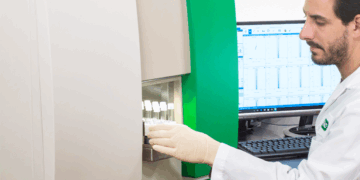
10 Tips for Optimizing High-Throughput Flow Cytometry Assays
Flow cytometry can be labor intensive, and efforts to increase throughput can lead to reduced data quality or even instrument reliability issues such as blockages. While some instruments are more …

Optimize Your Assays for High-Throughput Flow Cytometry
Flow cytometry is a powerful technique with many applications in both academia and drug discovery. It can facilitate complex immunophenotyping experiments, making it an indispensable tool for understanding biological systems. …

Compliance and Regulations for Flow Cytometry in Drug Discovery: Webinar Series
In this webinar series, learn about 21 CFR Part 11 regulations for flow cytometry in drug discovery. Learn what software and instruments can help you comply.

Vive la Différence: The Beauty of Diversity in Life, Life Science, and Flow Cytometry
The differences between us are what makes life interesting, and diversity in a group that shares a common goal can lead to many benefits. Here we examine the similarities and differences between researchers using flow cytometry for academic research and those using it for drug discovery. We outline the challenges they face and learn that they share a common goal as well as a common solution.

Biotherapeutic Antibody Discovery at Bio-Rad’s New Center for Excellence
The Pioneer Platform features one of the largest functional antibody libraries available, utilizing SpyLock technology for rapid prototyping and screening of hundreds of bispecific antibodies, and TrailBlazer technology for efficient antibody format conversion. Together, these services provide a comprehensive and streamlined solution for researchers seeking to develop innovative biotherapeutic therapies.

Cytometry in Drug Discovery: An Introduction to Regulation, Standardization, and Productivity
Many researchers learn flow cytometry in academia, but find new challenges in the commercial sector. In this webinar, learn about regulatory issues and more.

10 Key Factors for Achieving Accurate Cell Counts: Tips, Tricks, and Myths
Counting is something we are all familiar with but it’s not always as simple as one, two, three. Measuring the concentration of cells in suspension is a common but surprisingly complex task in cell biology that is easy to get wrong. This article explores ten factors that can influence cell counting, gives advice on how to improve accuracy, and dispels some commonly held myths.

Coming Together Is the Beginning: Working Together Is the Success
Follow the story of Evitria as it grows from a small Chinese hamster ovary (CHO) cell supernatant supplier to a global therapeutic antibody production company serving clients across the globe. Bio-Rad has partnered with Evitria at every stage of this remarkable journey and looks forward to supporting its continued success.

Faster PCR and Flow Cytometry Highlighted in Annual Lab Automation Roundup
The annual international Society for Laboratory Automation and Screening (SLAS) conference is the highlight of the year for scientists in academia, industry, and government focused on leveraging the power of automation to achieve scientific breakthroughs. Here are some highlights of this year’s conference and how Bio-Rad contributed to it.

Flow Cytometry and the Law of Bottlenecks
Manufacturing and high-throughput screening may seem to have very little in common, but they are related at a fundamental level. Both seek to transform a raw material into a finished product, and both struggle with constraints, or bottlenecks, that reduce efficiency. How can we apply the revolutionary 20th century management principles of continuous improvement to 21st century flow cytometry?
